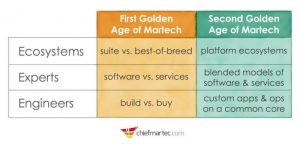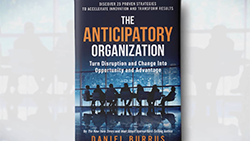A motivated employee is a high performing employee. This claim likely won’t be disputed by talent managers or executives, and in fact, research has shown it to the be the case. Creating a motivated work force should be a primary goal of any executive or talent manager, but through what machination should this be accomplished?
We have likely all experienced some form of motivational tactic, dating all the way back to our childhood. Children are given “Gold Stars” on a bulletin board in elementary school, a basic form of extrinsic motivation. Employees are given everything from pizza parties to performance based bonuses, but are these practices actually effective in increasing motivation among employees?
In my view, these simplistic methods are shortsighted. Creating a team of motivated employees goes far beyond the “carrot and stick” approach of monetary rewards or the officially sanctioned relaxation of office parties or bean bag chairs.
Science has emerged to support several factors that can properly motivate team members. I will frame into 2 distinct groups, “environment” and the “process”.
The Environment
Borrowing from another field of study, there is a term in conversion-rate optimization (CRO) called “friction”. It essentially means any unnecessary element that may be slowing or stopping the user from completing a desired task (like completing a purchase or filling out a lead form).
Creating an ideal working environment can be seen as akin to removing or reducing the amount of friction that workers encounter, both physically and psychologically, when trying to do their jobs.
We can attempt to do this in a variety of ways. I’ve listed 3 of the most effective ways below:
#1 The Space
The age of workers being relegated to tiny cubicles, where they are cut off from any interaction with their co-workers, is coming to an end. The new popular trend is known as an open office space– designed to be spacious and open with no barriers between works. This layout encourages collaboration, commitment, shared responsibility, and is often cited as the most productive layout for teams.
Furthermore, one of the risk factors associated with burnout in the workplace is “fewer opportunities for face-to-face contact with others”, according to Richard Wexler, former president of the New York State Psychological Association. An open office allows for less isolation and more interaction with our fellow humans, and could reduce the risk for burnout.
#2 The Equipment
Following the computer revolution in the 1980’s and 1990’s, instances of carpal tunnel syndrome and other repetitive stress disorders rose steeply, as employees were spending long hours in the office, at their desks, and often performing repetitive tasks with the mouse, keyboard, etc.
Workers may not even notice, but small inefficiencies in their workstation can lead to reduced productivity, high risks of injury, and general discomfort (i.e. lots of friction that needs to be dealt with).
The field of office ergonomics emerged from this crisis, and thankfully there has been a lot of recent developments in the science of healthy work environments, helping to create a much more friction-less work-space. Studies have shown the importance of ergonomically designed office products at helping reduce issues like back pain and musculoskeletal symptoms, as well as the improvement of work related tasks.
To take advantage of this knowledge, consider making standard practice for all office chairs to be ergonomic, investing in standing desks or treadmill desks to reduce sedentary behavior and improve overall health, and finally consider “vertical” computer mice and specially designed keyboards to avoid CTS and other RSI.
#3 The Team
Research published in the Harvard Business Review has indicated that skill sets of individual team members might not have much to do with the overall performance of the team. It might, in fact, have much more to do with the personality traits of the individual team members.
They break personalities down into 5 categories:
- Results-oriented.
- Relationship-focused.
- Process and rule followers.
- Innovative and disruptive thinkers.
- Pragmatic thinkers.
Finding the correct ratio of personalities for a given team is more crucial to the effectiveness of the team than other factors. Furthermore, determining precisely the role, the interaction and the values of individual team members will help determine how they will work together in the long term, and reduce friction overall.
The Process
The 3 aforementioned “environmental” factors, i.e. the space, the equipment, and the team, all work to create a foundation for work to be done. If optimized correctly, they will enable smooth, frictionless work to be accomplished.
However, the work process itself needs to be optimized as well, and there are several factors at play with that. Overall, the management of the process is where motivation and productivity tends to crash.
#4 Avoiding Boredom, Providing Meaning
Studies have shown that a majority of workers are “not engaged” in their workplace, leading many to be essentially “miserable” in their day to day jobs. Additional studies have shown that being engaged at work is strongly linked to internal drivers, i.e. finding intrinsic meaning in the work being done.
In today’s specialized workplace, many employees play a small (albeit crucial) role in the overall product or process, which can blur the connection between work and meaning. As an example, does a worker checks for bugs in computer code necessarily make a meaningful connection between her/his work and the overall mission of the organization?
This can have adverse impact on motivation, and a potential high correlation to burnout. As a manager, careful attention should then be paid to the internal drivers of employees and the correlation to their job roles.
#5 Goal Setting
Goal setting is an extremely important part of management, and while ambitious goals are generally preferred (this is true at an organizational as well as individual level), it’s not a “one size fits all” approach.
Research has shown that for complex and creative tasks, without predictable outcomes, hardline ambitious goals are not ideal. Simply asking creative people to “do their best” will likely achieve better results.
For more process oriented jobs that have measurable outcomes, setting the classic ambitious goals can provide the necessary motivation.
To provide further nuance, external motivations (such as performance bonuses) don’t necessarily work well either, and may be counter-productive when an employee is already internally motivated towards a goal.
When internal motivation is not present (like in many commission based sales jobs), external motivators like bonuses can provide the necessary motivation.
#6 Performance Evaluations and Feedback
Another important, yet nuanced, aspect of management is performance evaluations and ongoing constructive feedback. However there are underlying issues with how both of these aspects are handled in many organizations.
With performance evaluations, there has been observed bias by managers that favor employees that are either likable or “like me” (i.e. similar to the evaluator). This leads to both incorrect evaluations, but also potential resentment and discouragement for those employees with less favorable evaluations (warranted or otherwise).
The solution to this is for managers to seek more objective performance data, and stop “trusting their gut”.
With regard to constructive feedback, the need for it is incredibly important, but the implementation of it is often incorrect.
While it’s somewhat counter-intuitive, a focus on the positive aspects of performance can in fact de-motivate people. A more constructive focus on what needs improvement can be more motivating and beneficial, as it actually focuses on ways to improve performance.
To further complicate, the underlying nature of people is not to embrace criticism, so an overly critical evaluation won’t have a positive outcome, no matter how good the intentions.
Conclusion
Creating and enabling a motivated work force isn’t intuitive, or easy, or necessarily straightforward, but it can be done. Taking a critical look at all the factors involved, including the environment of your office, the equipment and workspace or your workers, the dynamics of your team, and the effectiveness of your feedback and evaluation practices, can help tremendously in creating a friction-less and highly motivated team and aiding in the long-term success of any organization.
Photo by Alex Kotliarskyi on Unsplash
Business & Finance Articles on Business 2 Community(41)








